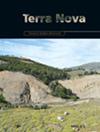The effect of pre-existing fabrics on plate bending and seismicity in Alaska subduction zone
IF 1.7
3区 地球科学
Q2 GEOSCIENCES, MULTIDISCIPLINARY
引用次数: 0
Abstract
Remnant fabrics inherited from mid-ridge play a key role in variations of plate deformation, hydration and seismicity along subduction zones. However, the quantitative relationships between the orientation of these remnant faults, plate bending and seismic activity at subduction zones still remain unclear. Here, we investigated the flexure of the Alaska subducting plate and assessed the relations between plate flexural curvatures, trench–fabric angle and seismicity. The results show that the flexural curvature and seismicity have nearly linear relationships with the trench–fabric angle. We find that remnant faults are more likely to be reactivated by plate bending at low trench–fabric angle region, causing greater plate deformation, hydration, weakening and seismicity. Plate weakening in turn promotes flexural bending curvature, resulting in higher degree of fracture and more earthquakes. However, at the high trench–fabric angle region, it is inclined to form new trench-parallel bending faults that have smaller bending curvature and less seismicity.先前构造对阿拉斯加俯冲带板块弯曲和地震活动性的影响
中脊遗留下来的残余构造在板块变形、水化作用和沿俯冲带的地震活动变化中起着关键作用。然而,这些残断层的走向、板块弯曲和俯冲带地震活动之间的定量关系尚不清楚。在此,我们研究了阿拉斯加俯冲板块的弯曲,并评估了板块弯曲曲率、沟构角与地震活动性之间的关系。结果表明,弯折曲率和地震活动性与沟-构角呈近似线性关系。研究发现,在低沟构角区域,残余断裂更容易被板块弯曲活化,造成较大的板块变形、水化、弱化和地震活动性。板块的弱化反过来促进弯曲曲率,导致更高程度的断裂和更多的地震。而在高沟构角区域,倾向于形成新的沟平行弯曲断裂,弯曲曲率较小,地震活动性较小。
本文章由计算机程序翻译,如有差异,请以英文原文为准。
求助全文
约1分钟内获得全文
求助全文
来源期刊

Terra Nova
地学-地球科学综合
CiteScore
4.80
自引率
8.30%
发文量
59
审稿时长
2.3 months
期刊介绍:
Terra Nova publishes short, innovative and provocative papers of interest to a wide readership and covering the broadest spectrum of the Solid Earth and Planetary Sciences. Terra Nova encompasses geology, geophysics and geochemistry, and extends to the fluid envelopes (atmosphere, ocean, environment) whenever coupling with the Solid Earth is involved.
 求助内容:
求助内容: 应助结果提醒方式:
应助结果提醒方式:


